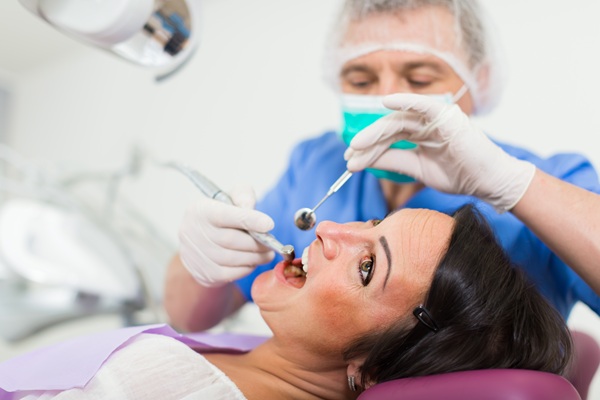Life After a Tooth Extraction: How to Reduce the Risk of Dry Socket
Aftercare is key to avoiding complications after . One common complication is dry socket, when the blood clot at the extraction site is lost or fails to form properly, exposing the bone and nerves underneath. Understanding how to care for the mouth after tooth extraction can help prevent dry socket and promote healing.
Signs and symptoms of dry socket
Dry socket can cause discomfort and delay the healing process. It usually occurs within a few days after a tooth extraction and may lead to significant pain. Some of the most common signs of dry socket include:
- Severe pain at the extraction site
- An empty-looking socket where the tooth was removed
- Pain that spreads to the ear, jaw, or temple
- Unpleasant taste or odor in the mouth
Contact a dentist as soon as these symptoms arise, as immediately treating dry socket is the most effective way to resolve the issue and reduce pain.
Ways to prevent dry socket
Following the dentist’s aftercare instructions is the best way to protect the extraction site, avoid dry socket, and encourage healing.
Avoid disturbing the blood clot
The blood clot that forms after a tooth extraction plays a key role in healing. It protects the bone and nerves while new tissue begins to grow. To keep the clot in place:
- Avoid using straws, as the suction can dislodge the clot
- Do not rinse the mouth forcefully for at least 24 hours
- Avoid touching the area with the fingers or the tongue
- Eat soft foods and chew on the opposite side of the mouth
Practice gentle oral hygiene
Keeping the mouth clean helps prevent infection and promotes healing. However, it is important to brush carefully around the extraction site. For the first 24 hours, patients should only rinse their mouth if the dentist instructs them to do so. After this period, a warm salt water rinse can help keep the area clean without irritation.
Avoid smoking and alcohol
Smoking and drinking alcohol can interfere with healing and increase the risk of dry socket. The chemicals in cigarettes slow down the body’s ability to recover and may prevent the blood clot from forming properly. Alcohol can irritate the extraction site and delay healing. Avoiding both for at least a few days after the procedure is best.
Take prescribed medications
Following the dentist’s advice on medication can help reduce complications and ensure a smooth recovery. A dentist may prescribe pain medication to manage discomfort. If antibiotics are prescribed, they should be taken as directed to prevent infection. Additionally, the patient should finish the entire course as directed by the dentist.
What to do if dry socket develops
Seeking dental care as soon as possible is important. A dentist can clean the area and apply a medicated dressing to relieve pain and promote healing. Pain relievers and proper oral hygiene can also help manage symptoms. With the right treatment, most cases of dry socket improve within a few days.
A smooth recovery after tooth extraction
Dry socket can be painful, but it is preventable. Following aftercare instructions, protecting the blood clot, and avoiding harmful habits can help ensure a smooth healing process. Anyone experiencing severe pain after a tooth extraction should contact a dentist for prompt treatment and relief.
Request an appointment here: https://www.foothillfamilydentists.com or call Foothill Family Dentistry at (949) 506-2115 for an appointment in our Foothill Ranch office.
Check out what others are saying about our dental services on Yelp: .
Recent Posts
No one looks forward to tooth extraction, but sometimes it is necessary for a person's oral health. This is often the case with the last adult teeth to erupt, the wisdom teeth. Many people need to have one or more of their wisdom teeth removed because they are not coming in right, there is not…
A tooth abscess is an infection that often requires a prompt visit to the emergency dentistry office. With the lockdown in place due to the COVID-19 outbreak, dentists have limited dental procedures to emergency treatment. The extent of pain and swelling typically determines if there is a dental emergency. However, if the abscessed tooth is…
Seeing an emergency dentist for tooth extraction is sometimes necessary when pain, damage, or infection develops suddenly. Tooth extractions are typically planned in advance, but urgent situations may require immediate dental care to relieve symptoms and prevent further complications. Knowing when to seek help from an emergency dentist ensures that patients receive prompt and effective…
An emergency dentist provides dental care on short notice. Many emergency dentists take walk-ins, while some practices have a dentist on call to respond to emergencies.You should have the contacts of an emergency dentist on hand, just in case the unexpected happens. An emergency dentist's phone number and physical location enable you to receive urgent…


